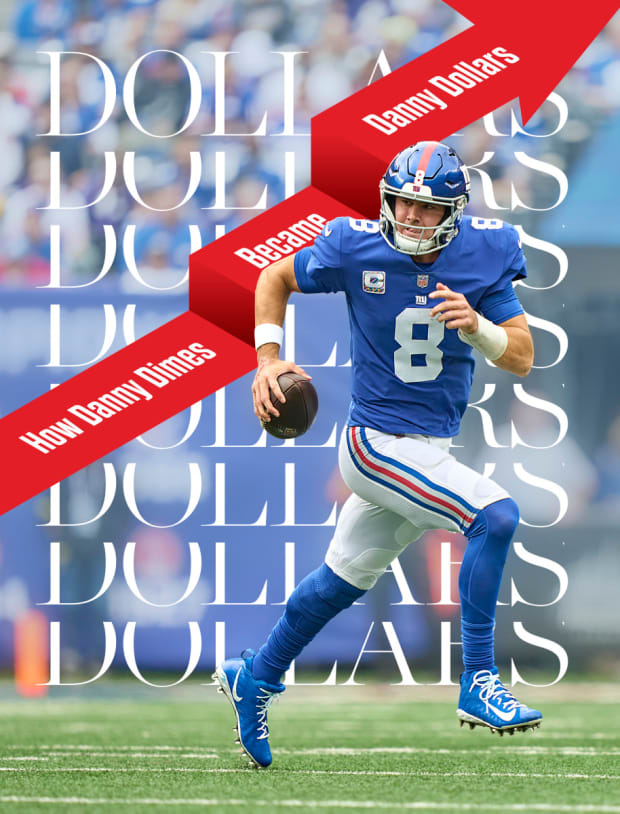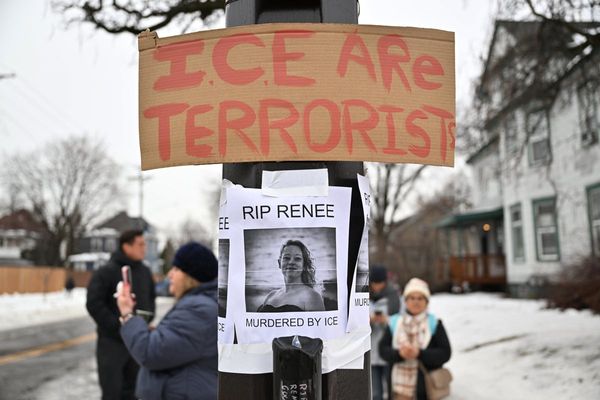Good morning, I’m Dan Gartland. My apologies to the Knicks for totally jinxing them in yesterday’s newsletter. (The lowly Hornets snapped their winning streak at nine games last night.)
In today’s SI:AM:
💰 How Daniel Jones earned his new deal
⚾ The skill Aaron Judge is looking to improve
If you're reading this on SI.com, you can sign up to get this free newsletter in your inbox each weekday at SI.com/newsletters.
A tale of two quarterbacks
NFL free agency officially begins a week from today with the start of the new league year, although we got a nice little appetizer yesterday with a flurry of activity at the franchise-tag deadline.
Six players were tagged yesterday, including, most interestingly, Lamar Jackson, who got the nonexclusive tag from the Ravens. If they had placed the exclusive tag on him, it would have all but guaranteed that Jackson would play for Baltimore next season. Barring an agreement on a long-term deal, the exclusive tag would have resulted in him being paid about $45 million for 2023. The one-year guaranteed salary of the nonexclusive tag, though, will be closer to $32 million. (The exact numbers can change based on deals other players sign this offseason.) Most importantly, as the name implies, the nonexclusive tag allows Jackson to negotiate long-term deals with other teams. The Ravens can then choose to match any deal he reaches with another team, or they can let him walk and receive two first-round picks in return.
Negotiations between Jackson and the Ravens have already been messy. The uncertainty over Jackson’s future hung like a dark cloud over the team last season. The former MVP is reportedly seeking a fully guaranteed contract worth more than the five-year, $230 million deal the Browns gave Deshaun Watson, and the Ravens have been unwilling to write a check that big.
As Conor Orr writes, the situation could work out favorably for either side. Jackson might get the contract he’s looking for from another team. Or, more likely, after soliciting offers from the rest of the league, he may find that the market simply isn’t willing to give him the contract he wants, allowing the Ravens to sign him to a deal they find more palatable. With only a handful of potential suitors, none of whom appear to be overly eager to sign Jackson, Orr writes that “Jackson looks to be outmatched.”
The other quarterback who appeared destined to get tagged yesterday was Daniel Jones, but the Giants reached a long-term agreement with him just before the 4 p.m. ET deadline. His new contract is reportedly worth $160 million over four years (two years, $82 million guaranteed), plus another $35 million in incentives.
Signing Jones allowed the Giants to instead use the franchise tag on running back Saquon Barkley, who would have hit the open market next week. Gilberto Manzano explains that this is the best possible outcome for the Giants. They get to keep the quarterback and running back who led the NFL’s fourth-most prolific rushing attack last season and save some money, too. Jones’s salary cap hit next season will be around $19 million, compared to the $32 million he would have earned playing under the nonexclusive tag. It’s fair to balk at the overall price tag of Jones’s deal—$40 million per year for a guy who’s had exactly one pretty good season—but the Giants are really on the hook for only $82 million over two years, and Manzano writes that the dollar figures “will likely seem about right” after the next crop of quarterbacks (Joe Burrow, Justin Herbert, Jalen Hurts and Jackson) sign their new deals.
The best of Sports Illustrated

Erick W. Rasco/Sports Illustrated
- Today’s Daily Cover, fittingly, is Conor Orr’s story about how Daniel Jones became a quarterback worth paying big money for.
- It’s no surprise that Lamar Jackson landed in the top spot on Gilberto Manzano’s list of the top 50 NFL free agents.
- Today marks the start of the Big East men’s basketball tournament and the 10th anniversary of the bold move that saved the conference, Pat Forde writes.
- Stephanie Apstein explains how Aaron Judge is working on one oft-overlooked aspect of his game to make him even better this season.
- Nick Saban spoke to Ross Dellenger about what he doesn’t like about NIL rules.
- In the battle for golf supremacy, LIV Golf has lost to the PGA Tour, Michael Rosenberg writes.
- Bronny James is now considered a five-star college recruit.
- Tom Brady shut down rumors that he could return to the NFL next season.
- Netflix has renewed its tennis and golf docuseries for second seasons.
- The Big East tournament matchup between UConn and Providence is the hottest seat in conference action, with the average ticket price exceeding $400 on SI Tickets.
The top five...
… things I saw last night:
5. Pau Gasol’s jersey retirement ceremony.
4. The Thunder fan who hit a half-court shot to win $20,000.
3. Kyle Kuzma’s overconfidence after shooting a wide-open three.
2. Trevor Zegras’s between-the-legs goal.
1. Clippers owner Steve Ballmer yelling about toilets.
SIQ
On this day in 1971, Joe Frazier handed Muhammad Ali the first loss of his pro career, winning by unanimous decision at Madison Square Garden. Which celebrity was ringside that night as a photographer for Life magazine?
- Frank Sinatra
- Cher
- Dustin Hoffman
- Mickey Mantle
Yesterday’s SIQ: On March 7, 1982, North Carolina narrowly defeated Virginia in the ACC men’s basketball tournament final in a game that left fans disappointed and contributed to the introduction of the shot clock after UNC coach Dean Smith ordered his team into the “four corners” offense to run out the clock. How much time was left when Smith called for his team to stall?
- 3 minutes, 14 seconds
- 5 minutes, 22 seconds
- 7 minutes, 34 seconds
- 10 minutes, 55 seconds
Answer: 7 minutes, 34 seconds. After Virginia cut the Tar Heels’ lead to 44–43, Smith went into the dreaded four-corners stall, and UNC did not attempt another field goal for the rest of the game.
The game had been a highly anticipated showdown between two of the top teams in the country. UNC entered the game ranked No. 1 in the nation and Virginia at No. 3. They had split the season series, and now the rubber match would decide the conference tournament championship. In the early going, the showdown between the Cavaliers, led by Ralph Sampson, and the Tar Heels, led by James Worthy, Sam Perkins and Michael Jordan, lived up to the hype. But Smith put an end to the back-and-forth game by telling his players to take the air out of the ball. You can hear the fans booing in this video of the game.
“This was another players’ game coaches ruined, the mud on the masterpiece being that disgraceful Smith stall that was successful, in part, because [Virginia coach Terry] Holland seemed to join the rest of us in courtside slumber,” Ken Denlinger wrote in The Washington Post, calling Carolina the “Chicken Champs.”
Having the stall spoil such a high-profile game helped outlaw the practice for good just a few years later. The shot clock came to the college game in the 1985–86 season. “If one game, more than any, finally convinced the rank and file that a shot clock was essential, it was the 1982 ACC tournament final,” Post columnist Thomas Boswell wrote in ’87.







